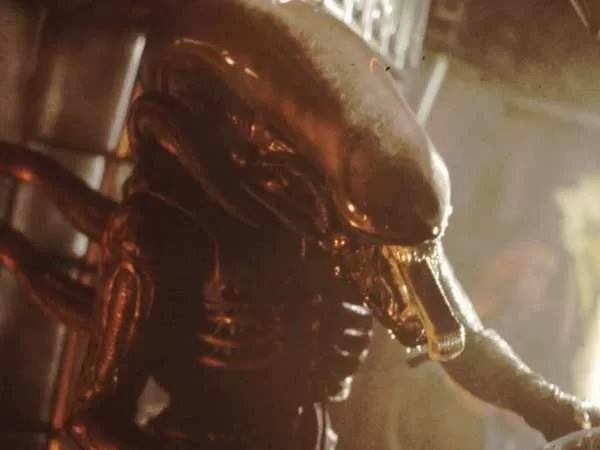Get ready to dive back into deep space terror with the latest spine-chilling installment of the legendary Alien franchise, Alien: Romulus. This seventh official entry in the series introduces a fresh crew of daring explorers who unknowingly cross paths with some of the most terrifying creatures in cinematic history: the xenomorphs. Brace yourself for chestbursters, facehuggers, and an unsettling nod to Roman mythology, as Alien: Romulus reawakens the horrors that have been haunting audiences for decades.
But before you step into the theater, here’s everything you need to know to prepare for this thrilling space nightmare.
What Are Xenomorphs?
Xenomorphs have become one of the most iconic monsters in science fiction. First seen in Ridley Scott’s 1979 Alien, these long-headed, sharp-toothed extraterrestrial creatures are more than just movie monsters—they’re biological nightmares. Xenomorphs possess exceptional strength, acidic blood that eats through metal, and terrifying hunting instincts. Yet, their real horror comes from their parasitic reproduction.

The xenomorph life cycle begins when the queen lays eggs. These eggs can survive dormant for years, waiting for a nearby host. Once a host is sensed, the egg hatches, releasing a spider-like facehugger. This creature forcibly implants an embryo inside its victim. Soon, the host experiences excruciating chest pain, a prelude to the most infamous moment in the series: the birth of a chestburster. This small xenomorph violently erupts from the host’s chest, a bloody introduction to its new world.
Within hours, the chestburster rapidly grows into a full-sized xenomorph, complete with a deadly spiked tail and razor-sharp claws. These aliens are highly intelligent and relentlessly hunt down anything that threatens their survival.
One of the most fearsome xenomorphs is the queen, a massive creature fiercely protective of her brood. Even though Ripley, the franchise’s iconic heroine, once took her down by shooting her into space, the queen remains a deadly force within the Alien mythos.
Who Are the Real Villains?
Although the xenomorphs are the face of the franchise’s horror, the Alien films are also defined by their shadowy corporate villains. Weyland-Yutani Corporation, the real baddie of the Alien universe, consistently puts its own greed ahead of human lives. The company’s sinister goal is to capture xenomorphs and exploit them as weapons, even if it means sacrificing countless employees in the process.
Unlike the xenomorphs, whose motivations stem from biological instinct, Weyland-Yutani’s greed and disregard for life are chillingly calculated. This adds an extra layer of tension to the films, making it clear that the dangers in space come from more than just aliens.
Who’s the Hero This Time?
For over four films, Sigourney Weaver’s Ellen Ripley stood as the quintessential final girl—tough, resourceful, and willing to sacrifice everything to survive the xenomorph onslaught. Ripley became a feminist icon, outsmarting both xenomorphs and Weyland-Yutani executives in her quest for survival.
However, Alien: Romulus introduces a new hero for a new generation. Cailee Spaeny stars as Rain, the leader of a group of young space explorers who find themselves trapped on a deserted space station. Their mission to scavenge fuel for survival quickly turns into a fight for their lives as the xenomorphs begin to pick them off one by one.
Rain’s crew doesn’t stand a chance against the xenomorphs lurking in the shadows, but their youthful determination might just give them a fighting chance. The film also introduces Andy, a new android character who plays the role of Rain’s brotherly protector. Androids have had mixed reputations in the Alien franchise, ranging from malevolent corporate puppets to sympathetic allies. How Andy fares remains to be seen, but fans know better than to trust any artificial person too easily.
The Timeline of Alien: Romulus
If you’re wondering where Alien: Romulus fits into the larger timeline, here’s the breakdown: the film is set roughly 20 years after the original Alien (1979) but before Aliens (1986), which takes place 57 years later. In Alien, Ripley defeats the lone xenomorph on her ship by opening the airlock and blasting it into space, only to return decades later in Aliens.
While Alien: Romulus features an entirely new crew, trailers suggest that Weyland-Yutani Corporation may still be up to their old tricks, trying to capture the “perfect specimen”—a lone xenomorph.
Other Films in the Franchise
With Romulus, there are now seven official Alien films, not including the Alien vs. Predator crossover movies. Ripley’s journey spans four films: the original Alien (1979), the James Cameron-directed sequel Aliens (1986), David Fincher’s Alien 3 (1992), and Jean-Pierre Jeunet’s Alien Resurrection (1997). In Resurrection, Ripley returns as a juiced-up clone after sacrificing herself in Alien 3—a controversial choice that left some fans scratching their heads.
Romulus follows in the footsteps of the prequels Prometheus (2012) and Alien: Covenant (2017). Directed by Ridley Scott, these films explore the origins of the xenomorphs and feature one of the most disturbing androids in the series: David, an eerily obsessed being hellbent on engineering the perfect life form—one that looks suspiciously like a xenomorph.
Is Romulus the End?
Hardly. Director Fede Álvarez hinted that the film’s title, Romulus, is a nod to Roman mythology. The myth of twin brothers Romulus and Remus will play a significant thematic role in the film, so expect some intriguing connections to family dynamics. Whether Alien: Romulus concludes the franchise’s story or opens the door for even more interstellar terror, one thing’s for certain: the xenomorphs aren’t going anywhere.


